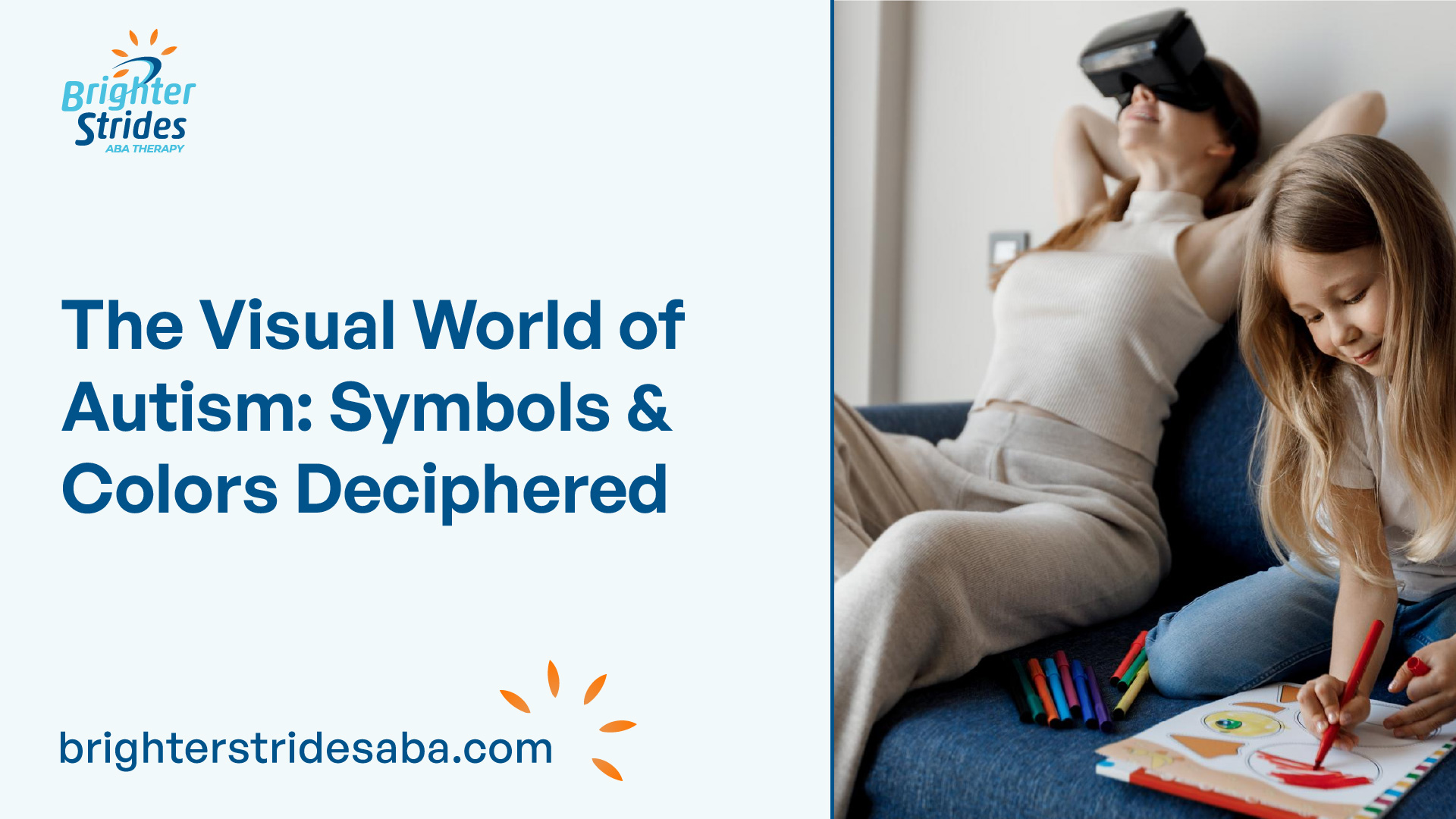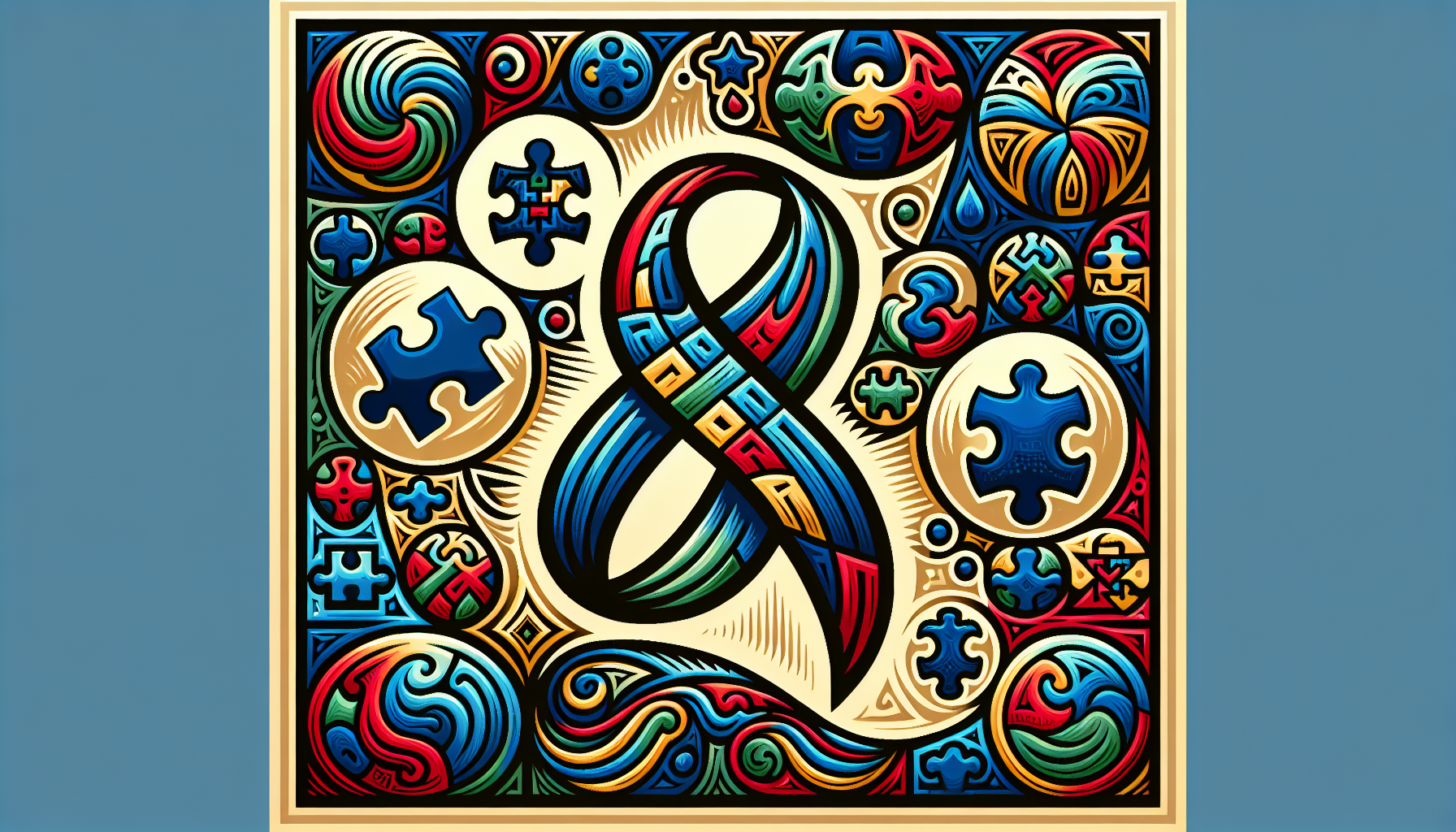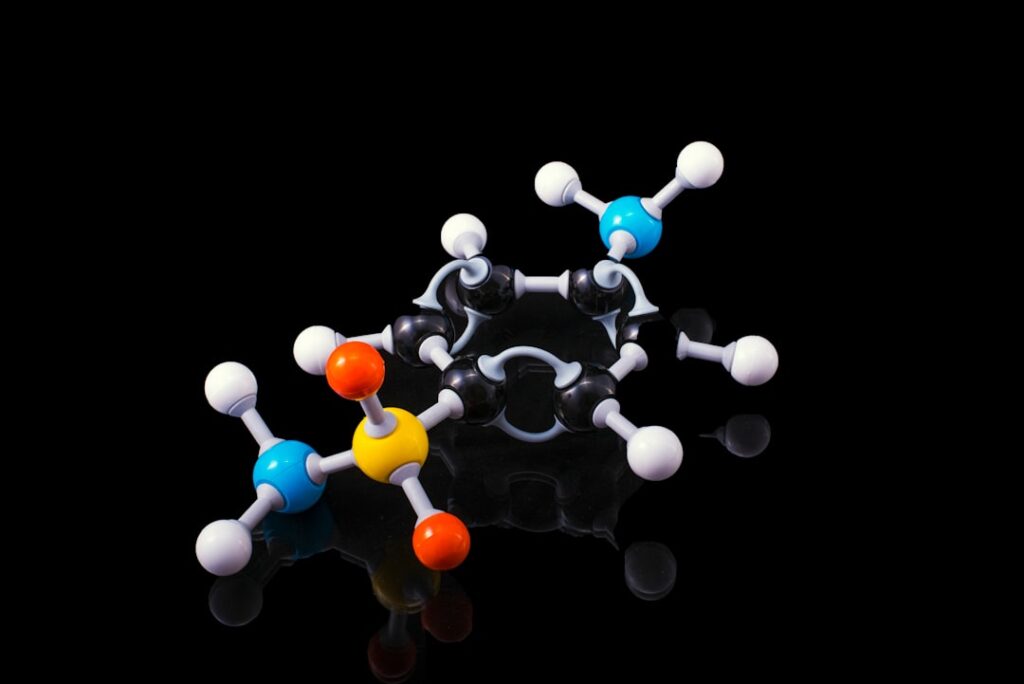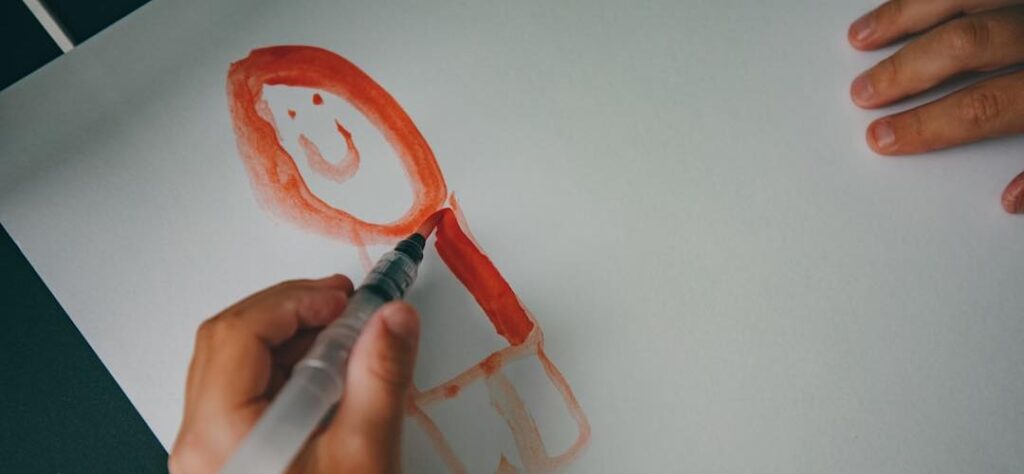Autism Symbols and Colors
Symbols play a crucial role in representing and raising awareness about autism. They provide a visual representation of the condition and offer a sense of unity and support for individuals on the autism spectrum. In this section, we will explore three significant symbols associated with autism: the puzzle piece symbol, the infinity symbol, and the autism awareness ribbon.

The Puzzle Piece Symbol
One of the most recognized symbols for autism is the puzzle piece. It was first introduced by the National Autistic Society in 1963 and has since become synonymous with autism awareness. The puzzle piece represents the complexity of autism and the idea that each individual with autism is unique and valuable. It symbolizes the diverse range of abilities and challenges experienced by individuals on the autism spectrum.
Over the years, the puzzle piece symbol has evolved, moving away from a lone puzzle piece to a more vibrant and inclusive representation. It has become a rallying point for loved ones and supporters of individuals with autism, signifying unity and a shared commitment to understanding and acceptance.
The Infinity Symbol
The infinity symbol is another symbol that has gained recognition in the autism community. Just like the concept of infinity, this symbol represents endless possibilities and potential, emphasizing the unique strengths and capabilities of individuals on the autism spectrum. It signifies the idea that autism is not a limitation but an integral part of one’s identity.
The infinity symbol serves as a reminder that individuals with autism have limitless potential for growth, learning, and achievements. It encourages society to embrace neurodiversity and appreciate the valuable contributions that individuals on the autism spectrum bring to the world.
The Autism Awareness Ribbon
The Autism Awareness Ribbon is a globally recognized symbol for autism. It features a puzzle pattern of red, yellow, blue, and green pieces that symbolize the complexity of the disorder and the diversity of those affected by it. The ribbon represents unity, support, and advocacy for individuals on the autism spectrum.
The different colors of the ribbon also hold specific meanings within the autism community. Red symbolizes passion and advocacy, yellow represents positivity and optimism, blue signifies calmness and awareness, and green represents growth and progress. Together, these colors reflect the multifaceted nature of autism and the need for acceptance and understanding.
Understanding the symbols associated with autism is important in fostering inclusivity and support for individuals on the autism spectrum. These symbols serve as a visual representation of the challenges, strengths, and unity within the autism community. By embracing and promoting these symbols, we can create a more inclusive society that values and supports individuals with autism.
The Meaning of Colors in Autism Symbolism
Colors play a significant role in autism symbolism, representing different aspects and emotions related to the autism community. Let’s explore the meanings behind some of the key colors associated with autism awareness.
Blue – Calm and Awareness
Blue is a color commonly associated with autism due to its calming effects, helping individuals on the spectrum feel more relaxed and comfortable. It is also the color of the puzzle piece in the autism awareness ribbon, frequently used in awareness campaigns and events. The association of blue with autism awareness was perpetuated by a campaign called “Light it Up Blue,” initiated by Autism Speaks in 2010. Blue represents support, understanding, and raising awareness for individuals with autism.
Red – Passion and Advocacy
Red is another color linked to autism, symbolizing passion, strength, and determination. It has been utilized by organizations to signify the fight against autism and the advocacy for individuals with autism. Red represents the passion and commitment of advocates working to improve the lives of individuals with autism.
Yellow – Positivity and Optimism
The color yellow represents joy, happiness, and optimism. In the context of autism awareness, yellow embodies the idea of a brighter future for individuals with autism, highlighting the importance of positivity and hope in their journeys. Yellow symbolizes a positive outlook and the belief in the potential of individuals on the autism spectrum.
Gold – Acceptance and Brilliance
Gold is a color that symbolizes awareness, acceptance, and the unique brilliance of individuals with autism. It serves as a reminder to celebrate the strengths and talents of those on the autism spectrum. Gold represents the recognition and appreciation of the remarkable qualities and abilities possessed by individuals with autism.
Green – Growth and Progress
The color green is often associated with growth, renewal, and nature. In the context of autism awareness, green symbolizes new beginnings, development, and the ongoing opportunity for progress and learning for individuals with autism. Green represents the continuous growth, advancement, and support for individuals on the autism spectrum.
Understanding the meanings behind these colors in autism symbolism helps to foster awareness, support, and inclusivity for individuals with autism. By recognizing and embracing these symbols, we can contribute to creating a more understanding and accepting world for everyone on the autism spectrum.
Controversies and Alternative Symbols
While the puzzle piece symbol is one of the most recognized symbols associated with autism, it has not been without its share of controversies and criticisms. Let’s explore some of the criticisms of the puzzle piece symbol, along with alternative symbols that have emerged in the autism community.
Criticisms of the Puzzle Piece Symbol
The puzzle piece symbol, first introduced by the National Autistic Society in 1963, has been met with varied interpretations and reactions. While some interpret it as representing the complexity and mystery of autism, and the idea of everyone coming together to support those with autism, others find it problematic and insulting.
Critics argue that the puzzle piece symbol suggests that individuals with autism are a puzzle to be solved or incomplete. They feel that it perpetuates the notion that those with autism are somehow lacking or do not fit in with society. In a study, the puzzle piece logo was found to evoke negative connotations regarding individuals with autism among observers.
The Butterfly Symbol
One alternative symbol that has gained popularity in the autism community is the butterfly symbol. The butterfly represents transformation and growth, reflecting the journey of individuals with autism as they navigate through life. It emphasizes the idea of progress and personal growth, highlighting the unique strengths and abilities of individuals with autism.
The Rainbow Spectrum Symbol
Another alternative symbol that has emerged is the rainbow spectrum symbol. This symbol represents the diversity and range of experiences within the autism community. It aligns with the concept of neurodiversity, emphasizing the idea that autism is a natural variation of the human experience. The rainbow spectrum symbol embraces the different strengths, challenges, and perspectives of individuals with autism.
The Supernova Symbol
The supernova symbol is another alternative symbol that has gained recognition in the autism community. The supernova represents the explosion of creativity, uniqueness, and brilliance that individuals with autism can bring to the world. It symbolizes the extraordinary potential and abilities that are often present in individuals with autism.
As the understanding and acceptance of autism continue to evolve, alternative symbols have emerged to emphasize acceptance, individuality, and the strengths of individuals with autism. It is important to recognize and respect the diversity of perspectives within the autism community and to choose symbols that align with the values of acceptance, inclusion, and empowerment.
The Evolution of Autism Symbols
Throughout the years, autism symbols have evolved, reflecting changing perspectives and a greater emphasis on individuality. One of the most recognized autism symbols is the puzzle piece, but alternative symbols have emerged, prompting discussions about the representation and inclusivity of individuals on the autism spectrum.
The Puzzle Piece – From Mystery to Individuality
The puzzle piece symbol, representing autism, originated in 1963 when a parent of an autistic child designed the National Autistic Society’s logo, depicting autism as a “puzzling condition”. Over time, the puzzle piece has undergone transformations, aiming to move away from the perception of autism as a mystery to embracing the individuality and diversity of those on the spectrum.
While the puzzle piece has been viewed by some as a symbol of unity and support for individuals with autism, it has also sparked controversy. Critics argue that the symbol can be interpreted as suggesting that individuals with autism are incomplete or do not fit in with society. Despite ongoing debates, there has been no definitive consensus on whether the puzzle piece should continue to be used or if a new symbol should be adopted.
Alternative Symbols and Shifting Perspectives
In response to the controversies surrounding the puzzle piece symbol, alternative symbols have emerged within the autism community. These symbols aim to represent autism in a more inclusive and positive light. Some of these alternative symbols include the butterfly, the rainbow spectrum, and the supernova.
The butterfly symbolizes transformation and growth, reflecting the journey of individuals with autism as they develop and flourish. The rainbow spectrum symbol represents the wide range of abilities and characteristics among those on the autism spectrum. The supernova symbolizes the brilliance and unique talents that individuals with autism possess.
These alternative symbols signify a shift in perspectives, emphasizing the celebration of individuality and the diverse experiences of individuals on the autism spectrum. They aim to create a more inclusive representation that goes beyond the puzzle piece’s initial connotations.
The Importance of Valuing Individuality
While symbols play a role in raising awareness and promoting understanding of autism, it is crucial to recognize the significance of valuing individuality. Organizations such as Lexington Services prioritize supporting the unique goals and aspirations of individuals with autism.
While the puzzle piece symbolizes the uniqueness of individuals with autism, the primary focus should be on empowering individuals to accomplish their personal goals and fostering an inclusive community that embraces their individuality. Recognizing and celebrating the accomplishments and aspirations of each person on the autism spectrum promotes a more comprehensive and respectful understanding of autism.
As autism symbols continue to evolve, it is essential to engage in ongoing discussions, listen to the diverse perspectives within the autism community, and prioritize the well-being and inclusion of individuals with autism. By valuing individuality and embracing a broader range of symbols, we can foster a more inclusive and supportive environment for those on the autism spectrum.
Autism Symbols and Community Support
Autism symbols play a significant role in raising awareness and promoting inclusivity within the community. These symbols serve as a representation of the diverse experiences and unique perspectives of individuals on the autism spectrum. In this section, we will explore how these symbols contribute to community support and understanding.
Symbolic Representation and Inclusion
Autism symbols, such as the puzzle piece, the infinity symbol, and the autism awareness ribbon, provide a visual representation of autism and serve as a means of identification and recognition. The puzzle piece symbol, which originated in 1963, initially depicted autism as a “puzzling condition”. Over time, the symbol has evolved to reflect a more vibrant and inclusive representation, emphasizing the diverse spectrum of autism experiences.
These symbols create a sense of belonging and community by promoting inclusivity and acceptance. They serve as a reminder that individuals on the autism spectrum are integral members of society, deserving of respect, support, and understanding.
Emphasizing Individuality and Accomplishments
While autism symbols provide a collective representation, it is crucial to recognize and celebrate the individuality of each person on the autism spectrum. Symbolic representation should not overshadow the unique strengths, talents, and accomplishments of autistic individuals.
Organizations like Lexington Services, guided by their principle of “So They Can,” prioritize supporting individuals with autism in achieving their personal goals. By emphasizing individuality and recognizing the diverse abilities and aspirations within the autism community, these organizations foster an environment that values personal growth and self-empowerment.
Supporting Personal Goals and Aspirations
Community support for individuals with autism extends beyond symbolic representation. It involves actively supporting their personal goals and aspirations. By providing resources, services, and opportunities tailored to the unique needs of individuals on the autism spectrum, communities can help them thrive and reach their full potential.
Community support encompasses various aspects, including education, employment, social integration, and healthcare. It involves creating inclusive environments that promote understanding, acceptance, and accessibility for individuals on the autism spectrum.
By embracing autism symbols and actively engaging in community support, we can foster a society that values and uplifts the voices and experiences of individuals on the autism spectrum. Together, we can promote inclusivity, empower individuals, and create a more supportive and understanding world for everyone.
References
- https://www.angelsense.com/blog/what-do-the-autism-colors-and-symbols-mean/
- https://www.linkedin.com/pulse/awareness-pride-evolution-autism-symbols-from-1963-amber
- https://lexingtonservices.com/why-is-the-national-symbol-for-autism-a-puzzle-piece/
- https://www.autismparentingmagazine.com/autism-symbols/
- https://www.thetreetop.com/aba-therapy/autism-colors-and-symbols
- https://theplaceforchildrenwithautism.com/autism-blog/autisms-colors-symbols
- https://chapspitbeef.com/history-autism-puzzle-piece/

 We've just released an article!
Check out our blog!
We've just released an article!
Check out our blog!



